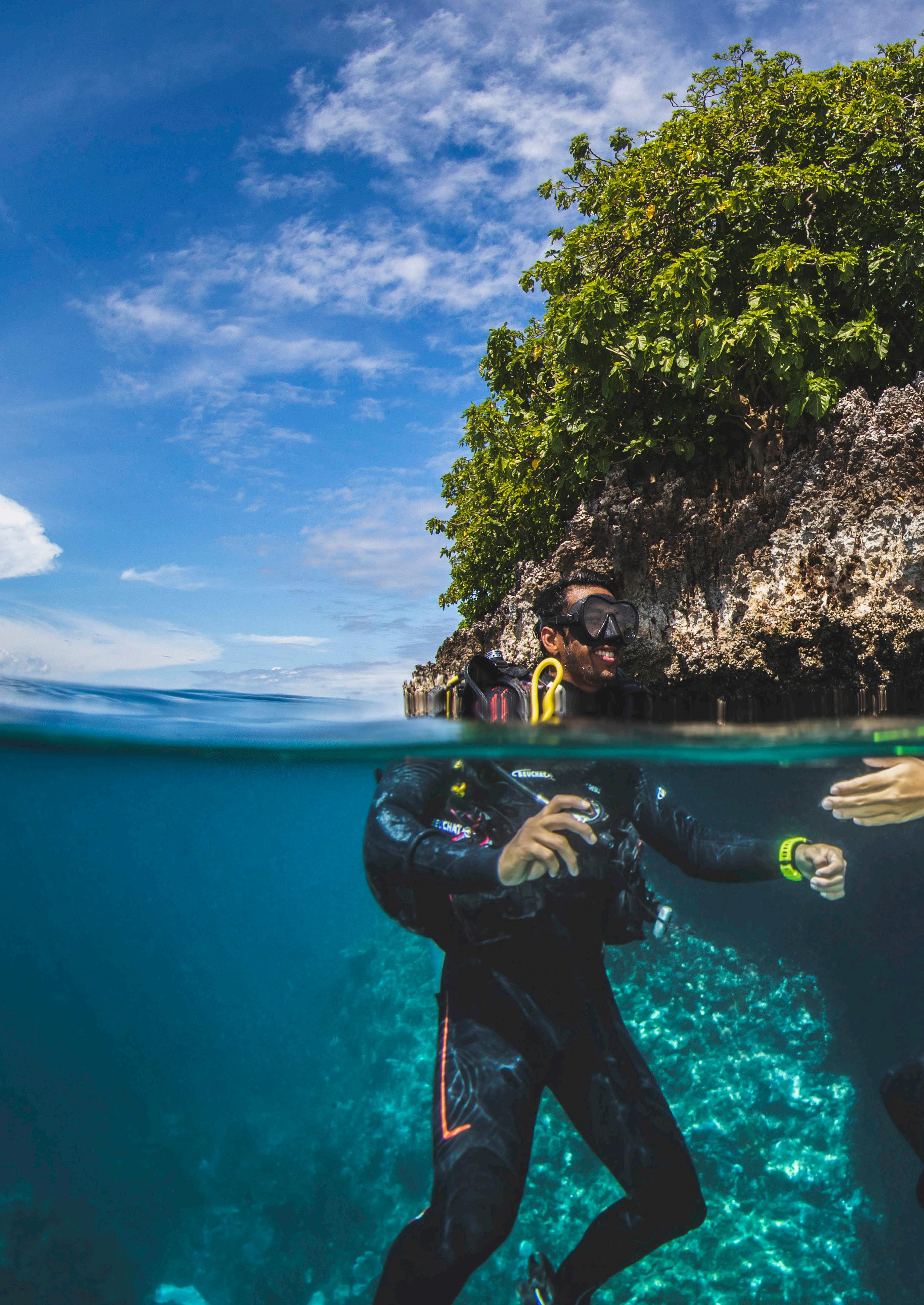
4 minute read
COMMERCIAL UNDERWATER PHOTOGRAPHY ASSIGNMENTS
COMMERCIAL UNDERWATER PHOTOGRAPHY ASSIGNMENTS
FEATURE AND PHOTOGRAPHY STEVE WOODS | WWW.STEVEWOODSPHOTOGRAPHY.COM
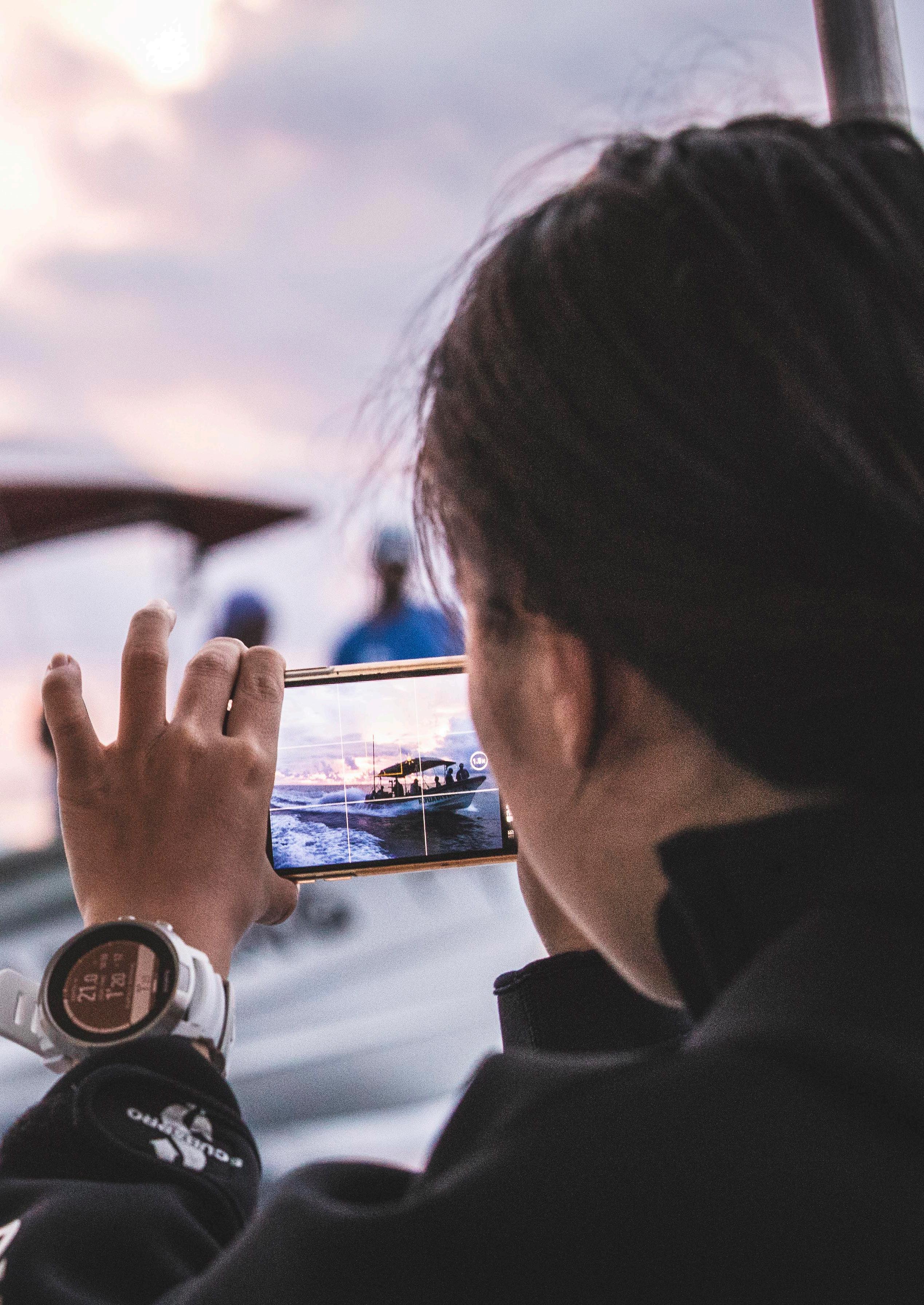
Shooting a commercial assignment underwater is one of the most rewarding things to do. As photographers, we spend a long time developing our own ideas about what looks good in an image and how to achieve it. Much of this is subjective, personal preference, but a lot is also objective. There are unwritten rules in photography underwater, as well as on land, and these matter a lot more when you are shooting for a commercial client.
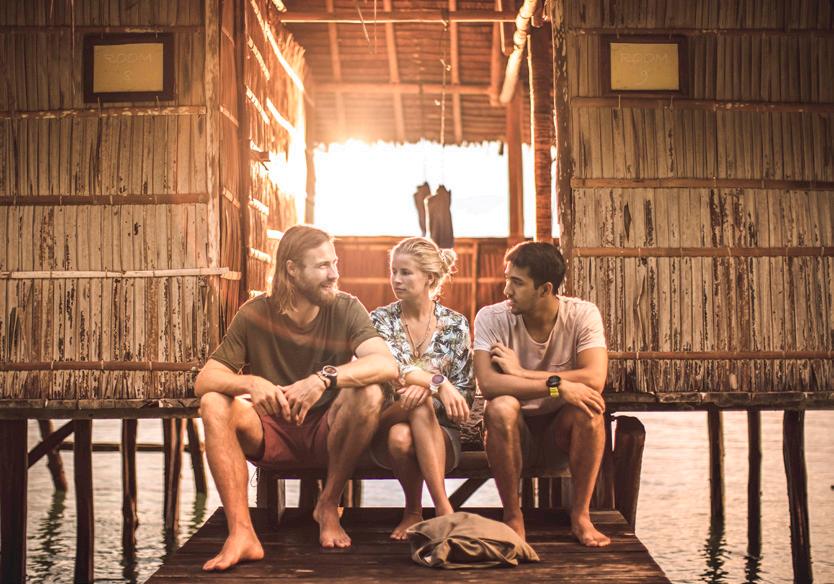

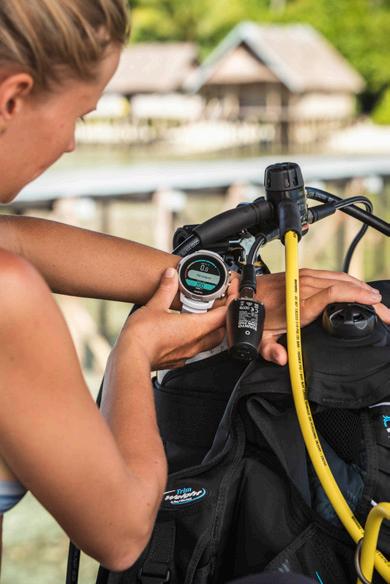
In order to develop as photographers, I think one of the best activities is to shoot for a specific purpose. Many people, as we all did when we started out, will simply point and shoot in a scattergun approach and see what comes out pleasing to the eye. This only gets us so far. Anyone can have a serendipitous mistake and create a pleasing image, it is much harder to come up with an idea, descend with a plan, shoot it and have the results come out as predicted. This is what will push you further down the line with your photographic ambitions.

I had built up a relationship with Suunto over a few years, having worked on a couple of projects with them and had them use my images to advertise the Eon Steel dive computer when it was released back in early 2015. When they approached me to photograph an as yet “un-named” computer, I jumped at the opportunity.

We had discussed various locations which all came with their pros and cons, when finally we secured Kri Eco Resor t in Raja Ampat, West Papua. Raja Ampat is the most biodiverse underwater world on the planet, full of colour and amazing life underwater, as well as on the land. I have previously worked in Raja Ampat as expedition leader/ photographer on a marine conservation organisation called Sea Sanctuaries Trust, so I knew the location well and could start planning the shots that I thought would be possible and would satisfy Suunto’s needs. As you can imagine, they needed a lot of content. In this digital era, advertisements can vary wildly from physical banners, in store POS displays to digital marketing campaigns for smartphones and computers.

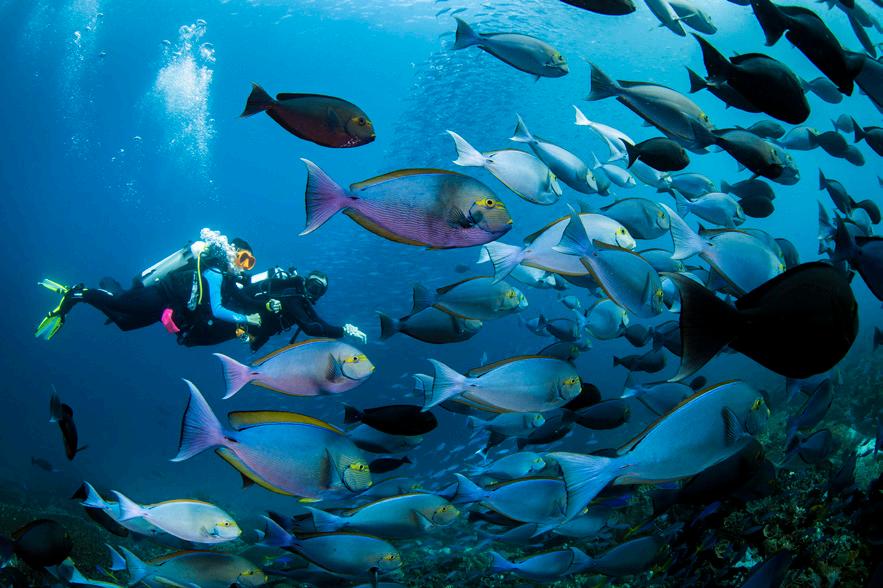
We needed to shoot a lot of content for every type of media.
Logistics is always a big deal on assignments like this, though once we arrived in Indonesia, with nearly a ton (literally) of camera and scuba equipment, 2 videographers, 5 models, 3 Suunto representatives, 50+ dive computers, plenty of memory cards and myself, everyone was very happy and keen to get started.
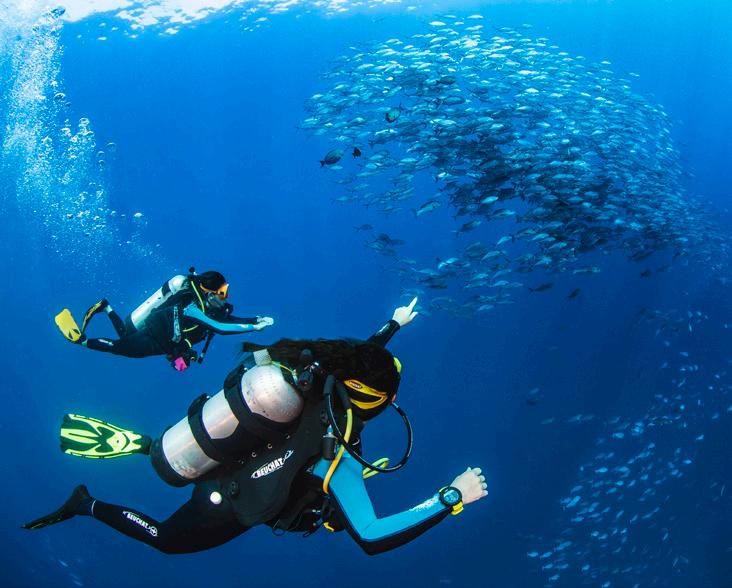
We had a strict schedule to keep as we would do 2/3 dives per day with the models being shared between the videographers and myself. As well as all the underwater photography, I also needed to shoot copious amounts of topside product/lifestyle images. This meant shooting at sunrise and sunset everyday in order to get the best light. Shooting for 12 hrs a day is taxing on anyone. Not only are you trying to organise and guide the photoshoots, but you also have part of your brain working on the next underwater shoot and the sunset shoot that will come after it. Again, having a plan is key here. Once you know what locations you have available to you and which models, you can then build up the scenarios and timings around that.
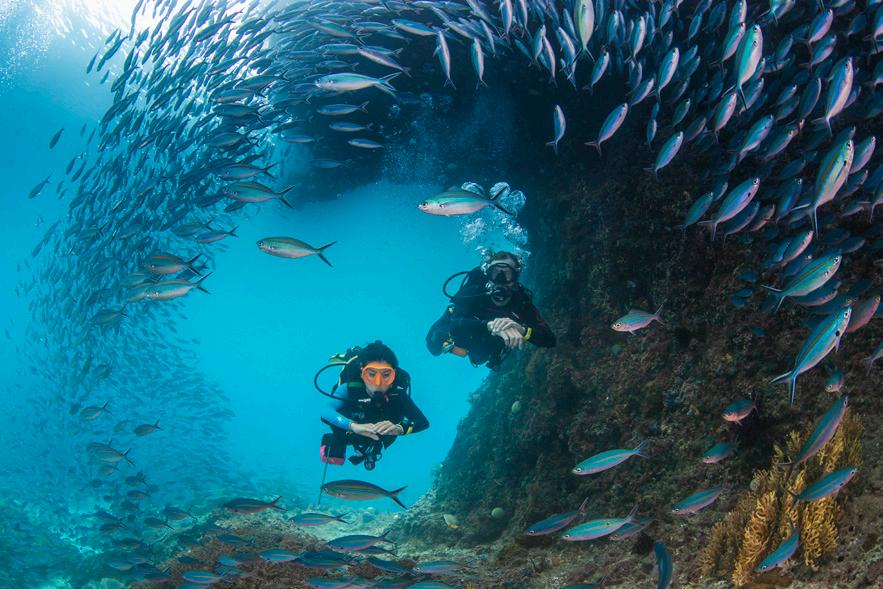
It really does make a huge difference to work with professionals that know what they are doing, and some very enthusiastic models who managed to perform (with a smile) every time we asked them to. They could be at 40 m in screaming currents, and then be asked to shoot an equipment setup as soon as they resurfaced.
On one of the last evenings, we found a lovely deser ted island to make a fire and share a few drinks together at sunset. It was a ‘wrap’ party, but it was also a fantastic opportunity to shoot yet more content for the assignment. One thing we did find out that evening, was that the new Suunto D5 (as it is now called) is a fantastic bottle opener!
After a hectic 10 days on the water, we all headed back to Sorong, then Jakarta and on to our respective countries.As we were flying for 24 hrs to get back home, this was a great time to start editing the 10k images we shot.
